LECTURE 3 CULTURE & ETHICS
- 格式:ppt
- 大小:238.50 KB
- 文档页数:42
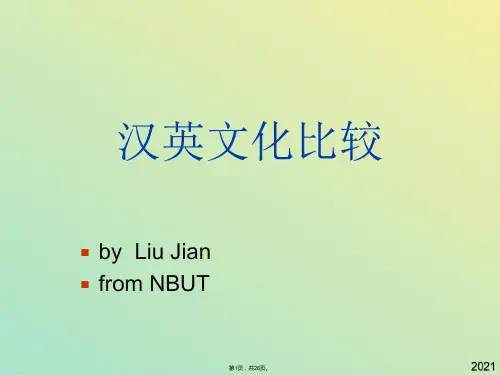

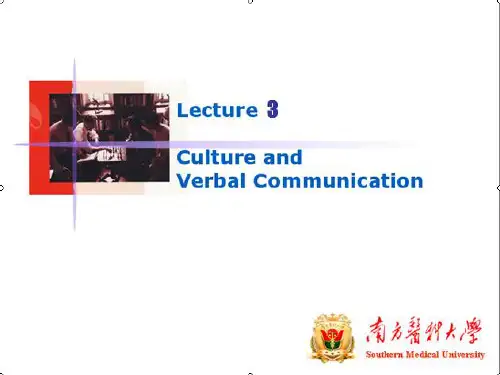
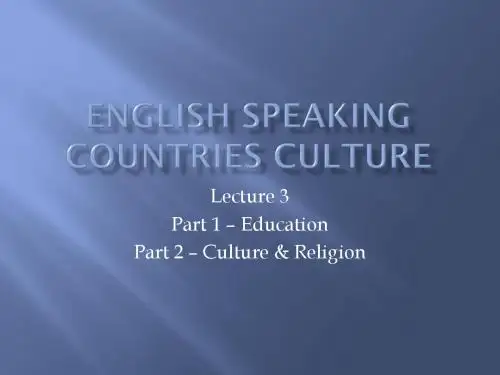



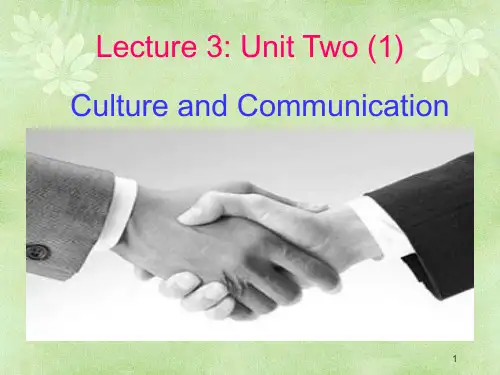
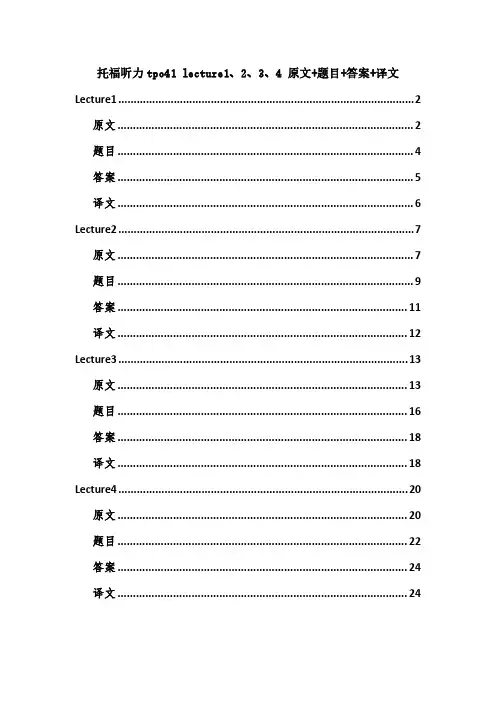
托福听力tpo41lecture1、2、3、4原文+题目+答案+译文Lecture1 (2)原文 (2)题目 (4)答案 (5)译文 (6)Lecture2 (7)原文 (7)题目 (9)答案 (11)译文 (12)Lecture3 (13)原文 (13)题目 (16)答案 (18)译文 (18)Lecture4 (20)原文 (20)题目 (22)答案 (24)译文 (24)Lecture1原文FEMALE PROFESSOR:Many organisms have developed the ability to survive in harsh environmental conditions—extreme heat or cold,or,very dry conditions....Like, plants in the desert—your textbook doesn’t have much about the specifics on desert plants,but I think that desert plants are great examples of specialized adaptations to extreme environmental conditions.So with desert plants,there are basically three different adaptive strategies.And I should point out that these strategies are not specific to any particular species—many different species have developed each of the adaptations.So,first off,there are succulent plants.There are many different species of succulent plants,but they all can absorb and store a lot of water.Obviously,opportunities to get water in the desert are few and far between.Generally,rains are light and short,so the rain doesn’t seep too far down into the soil…and there's a limited window of time for any plant to get the water before it evaporates.But succulent plants have a spread-out and shallow root system that can quickly pull in water from the top inch of soil,though the soil has to be saturated,since succulents aren't good at absorbing water from soil that’s only a little moist.Succulent plants also are well suited to retaining water—important in an environment where rainy days are rare.Succulent plants can store water in their leaves,in their stems,or in their roots.And to keep that moisture from evaporating in the hot desert sun,most succulent plants have a waxy outer layer that makes them almost waterproof when their stomates are closed.They also preserve water by minimizing their surface area—the more of the plantthat’s out in the sun,the more potential there is to lose stored-up water—and that means that most succulent plants have few,if any,leaves.Now besides succulent plants,there are also drought-tolerant plants. Drought-tolerant plants are like bears in a way.You know how bears mostly sleep through the winter?They can survive without eating because their metabolism slows down.Well,drought-tolerant plants also go into a dormant state when resources—in their case,water—runs short.A drought-tolerant plant can actually dry out without dying.I said before that most desert rains are light and brief,but occasionally there's a heavy one.Drought-tolerant plants revive after one of these significant rainfalls—and they're able to absorb a good bit of the rainfall due to their deep roots.Actually the root system for drought-tolerant plants is more extensive than the root systems of many plants that live in wetter climates.Drought-tolerant plants can even absorb water from relatively dry soil because of their deep roots,in contrast to succulent plants.The third adaptive strategy is to avoid the drought conditions altogether.Yes,there are plants that do this—annual plants.An annual plant will mature and produce seeds in a single season that will become the next generation of annual plants.In desert conditions,annual plants grow in the fall or spring to avoid the heat of summer and the cold of winter.Of course,these plants could face a serious problem if a particular fall or spring happened to be very dry—they would have difficulty growing and could die before producing seeds.But they have a mechanism to prevent one year of low rainfall from wiping them out. Not all seeds an annual plant puts out will grow the following year.Some seeds remain dormant in the ground for several years.It's a type of insurance that protects the annual plants from a season of poor growing conditions,of unfavorable weather.题目1.What is the lecture mainly about?A.The growth rates of plants in different geographical regionsB.Different ways that plants have adapted to desert environmentsC.The different mechanisms that plant roots use to absorb waterD.Different kinds of succulent plants2.What are two features of succulent plants that help them survive in deserts?[Click on2answers.]A.Succulent plants store water in their leaves and stems.B.Succulent plants become dormant until the next rainfall.C.Succulent plants have short stems.D.Succulent plants have few leaves.3.Why does the professor mention bears?A.To remind students of information from a previous lectureB.To point out a feature common to all desert plantsC.To reinforce a point about drought-tolerant plantsD.To help students understand the concept of adaptation4.What is one ability that drought-tolerant plants have that succulent plants do not have?A.The ability to absorb water from dry soilB.The ability to absorb water through their leavesC.The ability to prevent moisture from being lost through their leavesD.The ability to shed leaves5.Why can annual plants grow in a desert even after a year of no rainfall?A.Annual plants have an extensive root system that can absorb water from far away.B.Annual plants produce seeds all year long.C.Seeds of annual plants can store water for a long time.D.Seeds of annual plants can survive in the ground for a long time without water.5.Listen again to part of the lecture.Then,answer the question.(PROFESSOR)The third adaptive strategy is to avoid the drought conditions altogether.Yes,there are plants that do this.Why does the professor say this: (PROFESSOR)Yes,there are plants that do this.A.To correct a previous statementB.To acknowledge a potentially surprising factC.To anticipate the types of questions that students might have about the topicD.To make sure that students are paying attention答案B ADC AD B译文教授:许多生物已经发展了在恶劣环境中生存的能力:酷热、严寒,或者非常干燥的环境。
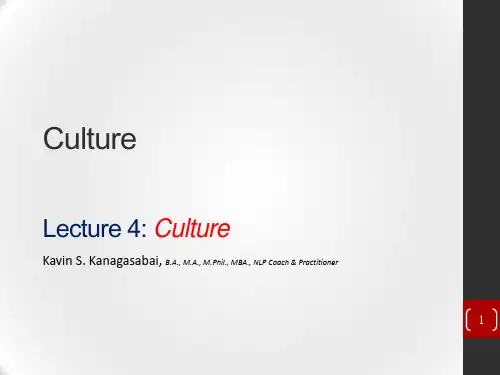
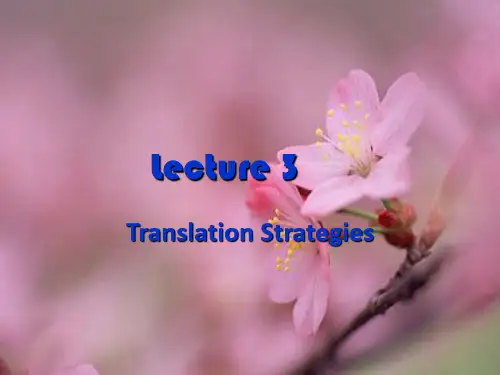
新标准大学英语视听说教程3全版答案Unit 1Part I1. b) To explore the rich history and culture of the town.2. c) It is located near a popular National Park.3. a) Being exposed to a diverse range of music.4. b) Encourage students to express their own opinions.5. c) Enhancing the overall learning experience.6. b) Enhancing students' listening skills in real-life situations.7. c) To improve your listening and speaking skills in the shortest time possible.8. a) Enhance their overall language proficiency.9. b) Practice listening and speaking skills through interactive exercises.10. c) Students will be provided with more opportunities to practice listening and speaking.Part IISection A11. B. They find it more accessible and convenient.12. C. They can manage their own time and schedule effectively.13. C. It provides various resources for different subjects.14. B. To offer widespread access to educational materials.15. A. Some students struggle to adjust to the independence and self-discipline required.16. C. Online courses offer a flexible learning environment.17. B. Students need to be self-motivated to succeed in online courses.18. A. It allows students to learn at their own pace.19. C. The tutor is responsible for guiding and assisting students throughout the course.20. B. Online courses provide a range of multimedia resources for different learning styles.Section B21. C. By creating interactive and engaging learning materials.22. A. To make learning more enjoyable and effective.23. B. They allow students to visualize abstract concepts and ideas.24. D. By incorporating educational games and simulations.25. A. Online platforms provide a space for collaborative learning.26. B. Technology enhances the learning experience for students.27. C. It provides students with immediate feedback on their progress.28. D. By offering personalized learning pathways for each student.29. A. Multimedia resources improve students' retention and understanding of content.30. B. By incorporating real-life examples and case studies into the curriculum.Section C31. B. It allows students to develop social and emotional skills.32. C. By providing opportunities for teamwork and cooperation.33. D. It promotes a sense of belonging and community among students.34. A. Extracurricular activities help students develop leadership skills.35. C. It encourages students to explore their interests and passions.36. B. By organizing cultural exchange programs and events.37. D. Extracurricular activities provide a break from academic pressures.38. A. It helps students develop time management and organizational skills.39. C. By providing opportunities for students to take on responsibilities.40. B. Extracurricular activities contribute to the holistic development of students.Unit 2Part I1. B. They facilitate effective communication between team members.2. A. To ensure everyone understands their responsibilities and tasks.3. C. It helps prevent misunderstandings and conflicts within the team.4. A. By setting clear expectations and goals for the team.5. B. It encourages open and honest communication among team members.6. C. To promote collaboration and mutual support within the team.7. B. Teams are more likely to achieve their goals when members trust and support each other.8. C. They allow teams to reflect on their performance and make necessary improvements.9. A. By recognizing individual contributions and achievements.10. B. Feedback should focus on both positive aspects and areas for improvement.Part IISection A11. B. It allows individuals to express themselves freely.12. C. It encourages divergent thinking and creativity.13. A. The fear of being criticized or judged by others.14. B. To explore new ideas and possibilities.15. C. It promotes a positive and inclusive learning environment.16. B. It can hinder personal and professional growth.17. A. By providing constructive feedback and support.18. C. They can provide valuable insights and perspectives.19. B. It contributes to the overall success and innovation of a group.20. A. By fostering a culture of open-mindedness and respect.Section B21. B. Empathy plays a crucial role in developing strong interpersonal relationships.22. A. To better understand and connect with others.23. C. It helps individuals navigate conflicts and resolve issues effectively.24. B. Empathy enhances communication and collaboration within a team.25. A. It allows individuals to consider different perspectives and viewpoints.26. C. They can better support and assist those in need.27. B. Empathy promotes a sense of belonging and community.28. A. By actively listening and showing genuine interest in others.29. C. It involves putting oneself in another person's shoes.30. B. Empathy can be developed and nurtured through practice and reflection.Section C31. C. Effective communication is vital for building and maintaining relationships.32. B. It helps individuals express their thoughts, ideas, and emotions.33. D. It ensures that messages are accurately understood and interpreted.34. A. By practicing active listening and paying attention to non-verbal cues.35. B. Effective communication fosters trust and mutual respect.36. C. It promotes positive interactions and reduces conflicts.37. D. Feedback should be specific, constructive, and non-judgmental.38. A. It is important to choose the appropriate medium for communication.39. C. By asking open-ended questions and encouraging dialogue.40. B. Effective communication requires both speaking and listening skills.Unit 3Part I1. B. To provide an overview of the topics that will be covered in the lecture.2. A. To introduce the main focus or argument of the lecture.3. C. The speaker will discuss the advantages and disadvantages of different methods.4. B. To explain the reasons behind a particular phenomenon or event.5. A. The speaker will analyze a historical event or period in detail.6. B. To discuss the implications and potential solutions to a problem.7. C. The speaker will provide examples to support their main points.8. A. To emphasize the importance or significance of a particular concept.9. B. To describe a process or step-by-step procedure.10. A. The speaker will compare and contrast different theories or viewpoints.Part IISection A11. B. It promotes critical thinking and problem-solving skills.12. C. Inquiry-based learning encourages exploration and discovery.13. A. It allows students to apply knowledge in real-life situations.14. B. The flipped classroom model enhances student engagement and participation.15. A. It encourages students to take responsibility for their own learning.16. C. Active learning promotes deeper understanding and long-term retention of information.17. B. It fosters collaborative learning and teamwork among students.18. A. By providing opportunities for students to ask questions and seek clarification.19. C. It prepares students for the challenges of the modern workforce.20. B. The teacher's role shifts from being a lecturer to a facilitator and guide.Section B21. C. It allows students to learn at their own pace and style.22. A. Personalized learning caters to individual strengths and weaknesses.23. B. It promotes student ownership and autonomy in the learning process.24. D. By leveraging technology to tailor instruction to individual needs.25. A. Personalized learning provides immediate feedback on student progress.26. B. It encourages students to set their own learning goals and monitor their progress.27. C. It enables students to explore their own interests and passions.28. D. By offering a wide range of resources and learning materials.29. A. Personalized learning adapts to students' unique learning preferences.30. B. It fosters a positive and inclusive learning environment.Section C31. B. It encourages students to think critically and creatively.32. C. By promoting problem-solving and analytical skills.33. D. Creative thinking allows individuals to generate innovative ideas and solutions.34. A. It fosters a sense of curiosity and exploration.35. C. Creative thinkers are more adaptable and resilient in the face of challenges.36. B. By encouraging brainstorming and divergent thinking.37. D. Creative thinking leads to new discoveries and breakthroughs.38. A. It helps individuals approach tasks and problems from different perspectives.39. C. By providing opportunities for self-expression and originality.40. B. Creative thinking is a valuable skill in both personal and professional contexts.Overall, the New Standard College English Listening, Speaking, and Pronunciation Course 3 provides comprehensive materials for students to enhance their language proficiency. The course covers various topics andsubjects, incorporating interactive exercises to practice listening and speaking skills. Additionally, the course emphasizes the importance of effective communication, critical thinking, and creativity, empowering students to become well-rounded individuals in both academic and professional settings.。